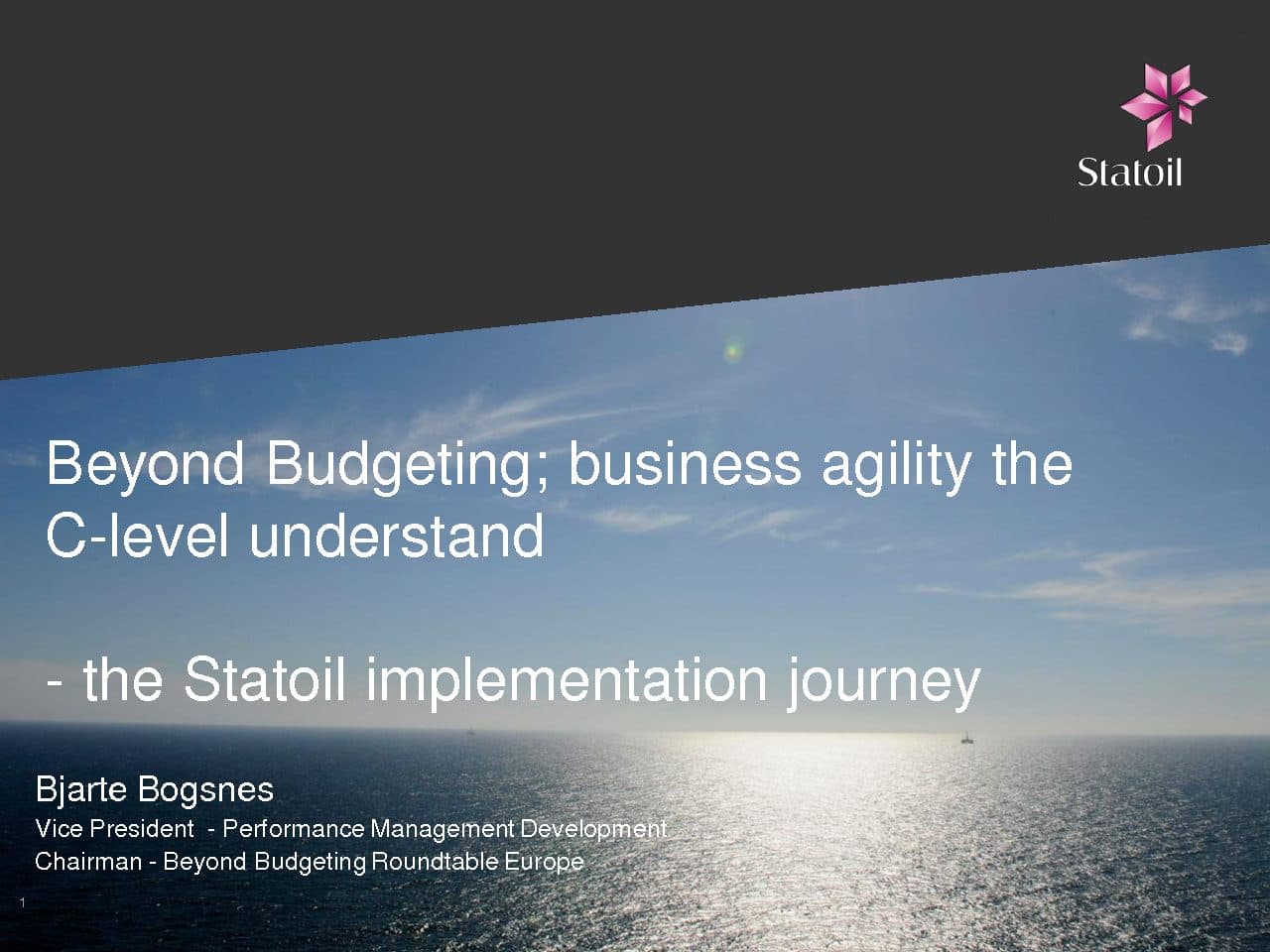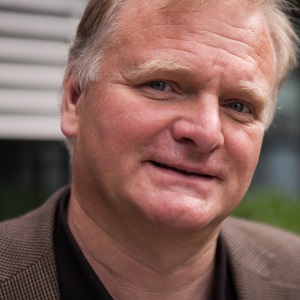Hi, my name is Bjarte. I'm not a consultant, but I do have a difficult name—you can blame my parents for that. I would like to share with you something called Beyond Budgeting. If you’re new to this, you might be in for a surprise—a positive one, I believe.
Is that the right presentation, guys? Okay, let’s see. This will be interesting.
About Statoil
Statoil, in a nutshell, is a Norwegian oil and gas company with significant international activities, including in the U.S. While we are in oil and gas, we are also a major player in offshore wind energy. We have a large project outside of New York.
Our goal is to provide energy for a low-carbon future. We acknowledge climate change, and while we are part of the problem, we believe we can also be part of the solution. In the short term, this means replacing coal with natural gas. In the longer term, it means leveraging our expertise in building large offshore structures to expand offshore wind power.
Leadership Principles
At Statoil, we have a set of leadership principles, with one standing out in the middle: Empower People. This is very important to us.
Now, let’s move forward. I hope I get my time back. Thank you.
The Traffic Metaphor
We have found a lot of inspiration in a metaphor related to traffic. In traffic, just as in business, we want great performance—a smooth and safe flow. There are two very different ways to manage that: the traffic light and the roundabout.
Who is in control at a traffic light? The programmer who set it up, not the drivers themselves. That programmer is not in the situation, but rather back in the office or asleep at night when we are driving. The information used to program the light is not fresh—it’s based on assumptions made long before real-world conditions change.
The roundabout, on the other hand, is a very different solution with the same purpose. Here, the drivers are in control, using fresh, real-time information. It’s a more self-regulating system.
Values-Based vs. Rules-Based Management
In Statoil, we talk a lot about values-based management, which is the opposite of rules-based management. The traffic light represents rules-based management—drivers simply follow orders. The roundabout represents values-based management—people rely on shared purpose and mutual trust.
At a traffic light, the mindset is often “Me first, I don’t care about the rest.” This is not a big issue when drivers are simply waiting for the green light. But in a roundabout, that attitude becomes a problem. Here, we must help each other, interpret intentions, and work toward a common goal of smooth traffic flow.
Organizations need more self-regulation for two reasons:
- The external world: Many speakers have talked about VUCA (Volatility, Uncertainty, Complexity, and Ambiguity). If we take VUCA seriously, it should have significant implications for how we design our management models.
- People: We must ask ourselves what kind of people we believe we have in our organizations.
The Theory X vs. Theory Y Dilemma
Douglas McGregor’s Theory X assumes people are inherently lazy and need to be tightly controlled. Theory Y assumes people are motivated and capable of self-management.
If we believe in Theory X, we design rigid, top-down management models. If we believe in Theory Y, we must adopt decentralized, flexible models. Traditional management largely operates under Theory X assumptions, which no longer align with today’s dynamic world.
Leaving Traditional Management Behind
Organizations need to move away from rigid, rules-based, annual, centralized command-and-control models. Instead, we must embrace values-based leadership, autonomy, transparency, and intrinsic motivation.
Research is clear: sticks and carrots don’t work. What drives performance is autonomy, purpose, belonging, and mastery.
Beyond Budgeting: A New Approach
At Statoil, we started this journey by eliminating the traditional budget in 2005. This was about aligning our management processes with our values, making them more VUCA-robust.
Traditional budgeting serves three conflicting purposes:
- Target setting
- Forecasting
- Resource allocation
Trying to achieve all three with a single number leads to gaming, sandbagging, and manipulation. Instead, we separated these processes.
New Budgeting Approach
- Target setting: Goals should be ambitious and inspiring, rather than rigid numbers.
- Forecasting: We focus on unbiased, lean, and simple forecasting.
- Resource allocation: Instead of pre-allocated budgets, we approve projects based on business needs and affordability in real-time.
Some companies go even further—Swedish bank Handelsbanken has operated without budgets or targets since 1970. They focus entirely on decentralization, trust, and transparency, achieving superior performance for over 40 years.
Holistic Performance Evaluation
At Statoil, we believe how we deliver is just as important as what we deliver. Our performance evaluation includes:
- What we deliver: Outcomes and business results.
- How we deliver: Values, behaviors, and ethical decision-making.
We take a broad perspective when assessing performance:
- Has the team truly moved toward strategic objectives?
- Have market conditions changed?
- How ambitious were the targets?
- What risks were taken?
- Is the performance sustainable?
Simply counting red and green KPIs is not enough. Leadership is not meant to be easy—it requires judgment beyond numbers.
Conclusion
Beyond Budgeting is about being more agile and more human. We believe that’s the key to better performance.
If you want to learn more, check out my book or visit Beyond Budgeting Institute. Thank you very much.




